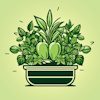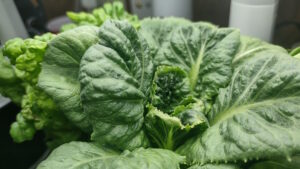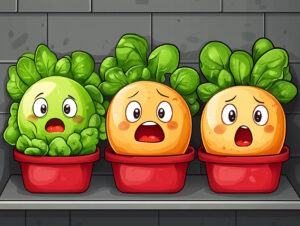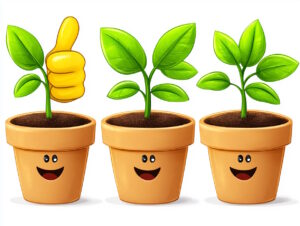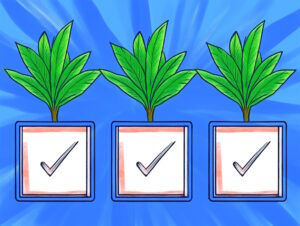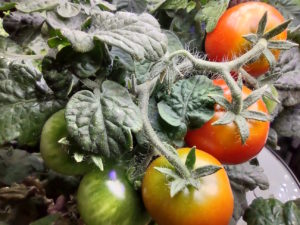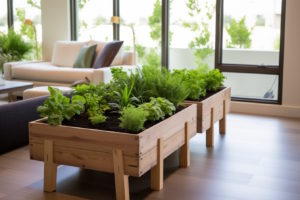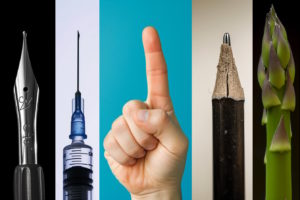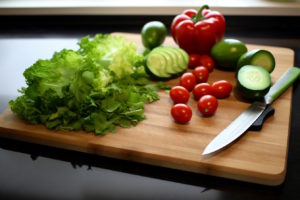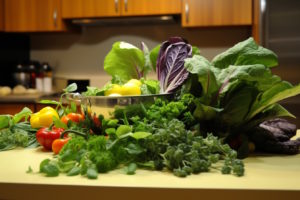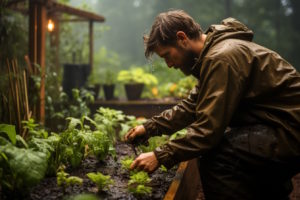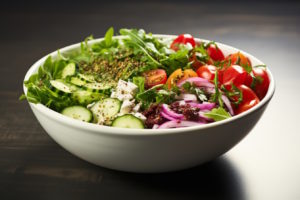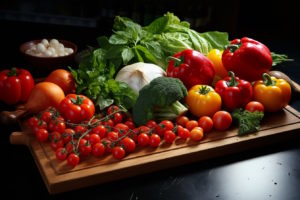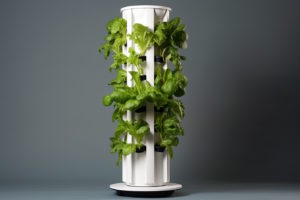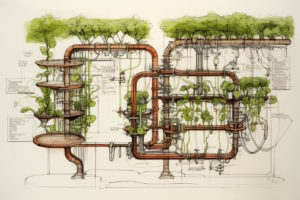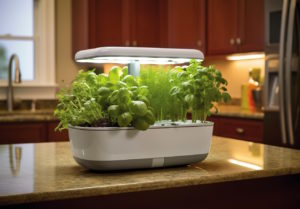You Have A New Hydroponic Growing System. Now What?
Whether by gift or purchase, you now have an indoor garden sitting in a box on the kitchen table. What do you do with it?
Welcome To The Indoor Gardening Community!
Indoor gardening includes all the fun of gardening with much less effort. You can garden all year long. You can experiment easily. And forget weeding your garden. You don’t even need a window! You’ll love this!
In this article, you’ll learn what to expect, what’s required of you, and what to do after your first crop of food.
Setting Up Your Hydroponic Growing System
Set up your Hydroponic Growing System according to the provided instructions. Each Hydroponic Growing System is slightly different and some have unique features.
If you received your Hydroponic Growing System as a gift, or are just curious as to how the system works, look at the companion article, How A Self-Watering Hydroponic System Works. With an understanding of the system, you’ll have the knowledge you need to get the most from your gardening appliance.
You can improve your chances of success with your new garden by checking the companion article, 32 Factors to Consider When Setting Up Your Indoor Garden.
Your new Hydroponic Growing System grows an impressive array of garden produce. For some ideas what you can grow, see the companion article, What Can I Grow With My Indoor Garden?. It’s a long list!
At this point, you know how the system works, you’ve selected a favorable location for your indoor garden, and you’re familiar with the gardening capabilities of a Hydroponic Growing System. It’s time to choose seeds for your indoor garden.
Selecting Indoor Garden Seeds
Unless your garden appliance came from AeroGarden (out of business) or Click and Grow, you probably need to supply the seeds for the plants you grow. Even if you’re device came with pre-seeded pods, you might want to grow something completely different.
You can start pretty much any seed in your Hydroponic Growing System. However, your Hydroponic Growing System may not have the water capacity, vertical clearance, light power, or pod size to support thirstier, taller, denser, or thicker plants. You cannot grow a full-size Heirloom tomato plant in your $50 countertop Hydroponic Growing System.
(If growing very large vegetable plants like a full-size Heirloom tomato plant or in-ground plants like carrots and onions indoors interests you, see the companion article, A Raised Bed Garden Indoors? Bring It On!)
You can grow most herbs, a variety of lettuce and other leafy greens, and fruits like tomato and pepper in your countertop Hydroponic Growing System. The vertical clearance of the typical Hydroponic Growing System is about twelve inches (12″), which is plenty for herbs and lettuce. Tomato and pepper plants need more height between the deck and light or consistent pruning to fit under the light.
The seeds you choose for your Hydroponic Growing System make a difference. Some plants like hydroponics and small spaces more than others. For example, the Tiny Tim tomato seeds [affiliate link] grow dwarf tomato plants, just right for countertop Hydroponic Growing Systems. You can find many food plants in dwarf size on Amazon [affiliate link]. The plants are the same as what you’d use outdoors, just smaller.
Lettuce and most herbs can be regular plants. They grow small and compact enough to fit in an indoor garden just fine.
You now know what types of seeds work best in a kitchen garden. So which seeds should you buy?
Planning Your Indoor Garden
Now that you can grow a garden, what garden will you grow? You have options for what you can grow.
- Grow plants based upon seeds you have on hand
- Grow ingredients for recipes (herbs)
- Grow foods for a salad (lettuce, tomatoes, bell pepper)
- Grow foods for salsa (peppers, tomatoes)
- Replace food you’d buy at the grocery store (lettuce)
You can read more about planning an indoor garden in the companion article, How To Plan Your Indoor Garden.
I’ve found the problem with just winging what I grow in my garden is that I don’t use too much of what I grow. My garden lacks purpose.
My first garden was an educational experience with the herb pods included with an AeroGarden. But I discovered I rarely use fresh herbs when I cook. Don’t worry too much about getting the perfect garden the first time; just focus on becoming familiar with the process. Use the time you spend learning your first garden planning your second garden. My current gardens are planned. I want a salad.
I grow cherry tomatoes, lettuce, bell peppers, and green onions I regrew from bulbs bought at the grocery. I have multiple Hydroponic Growing Systems.
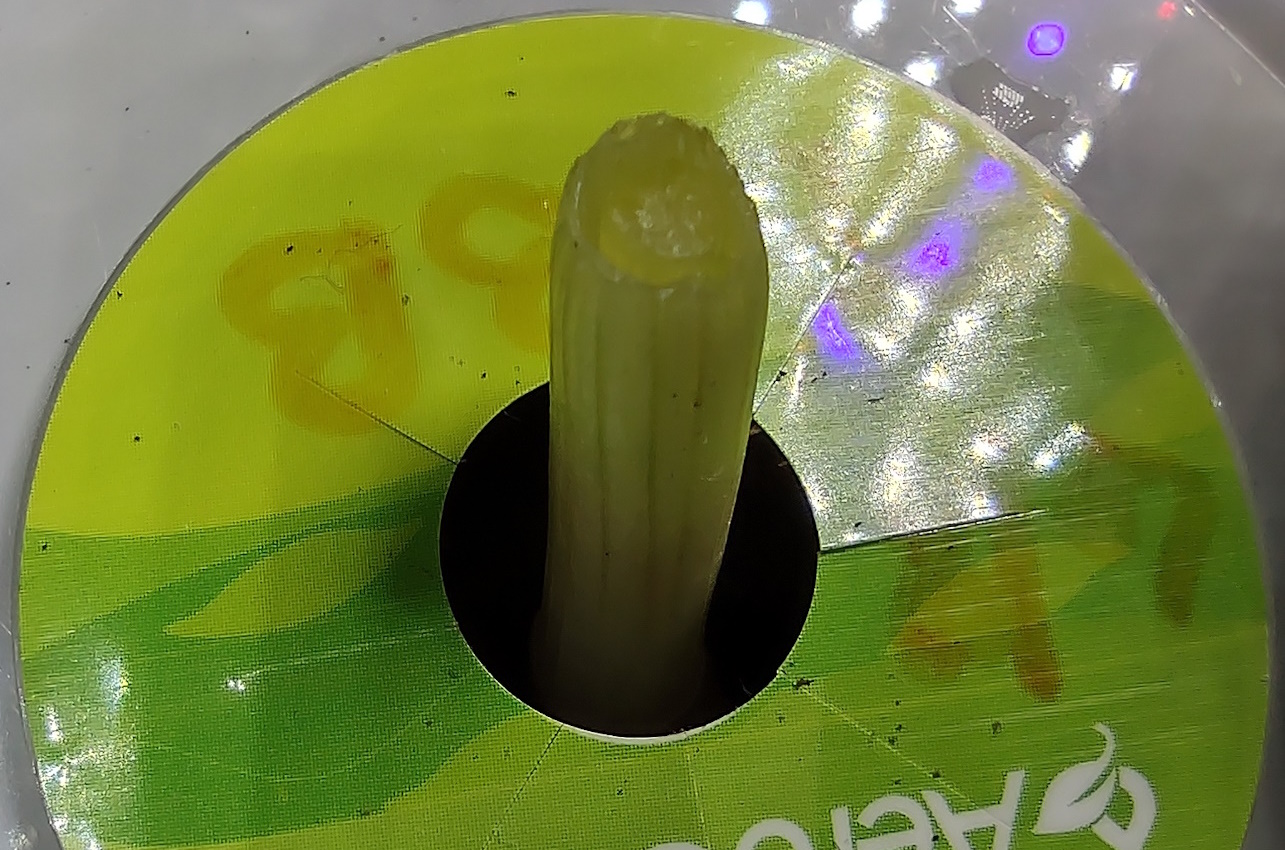
When you know what you want to grow, you can gauge how much capacity you need to do it. Add as many Hydroponic Growing Systems as you need to accomplish your goal.
Setting The Seeds In Your Hydroponic Growing System
You are ready to set the seeds inside the grow sponge/plug. The sponge should have a cavity in the top (when held like an ice cream cone).
Most manufacturers recommend soaking the grow sponge before inserting the sponge in a pod. Use the same water to soak the sponge as you will in your gardening appliance.
Drop two to four seeds into the cavity. How deep does the seed packet recommend planting seeds for this plant? If the depth is more than just below the surface, you can push one or two of the seeds deeper into the sponge. With two deep seeds and two shallow seeds, you may increase your odds of a successful germination. If you check the pod often, you might be able to determine whether a shallow or deep seed germinated; make a note so you can replicate that the next time you start this seed again.
Clearly, the easiest way to start a plant in your Hydroponic Growing System is by dropping a few seeds into a soggy sponge and setting pods in the deck. But some plants might be reluctant to grow this way. You can transplant a seedling to your Hydroponic Growing System.
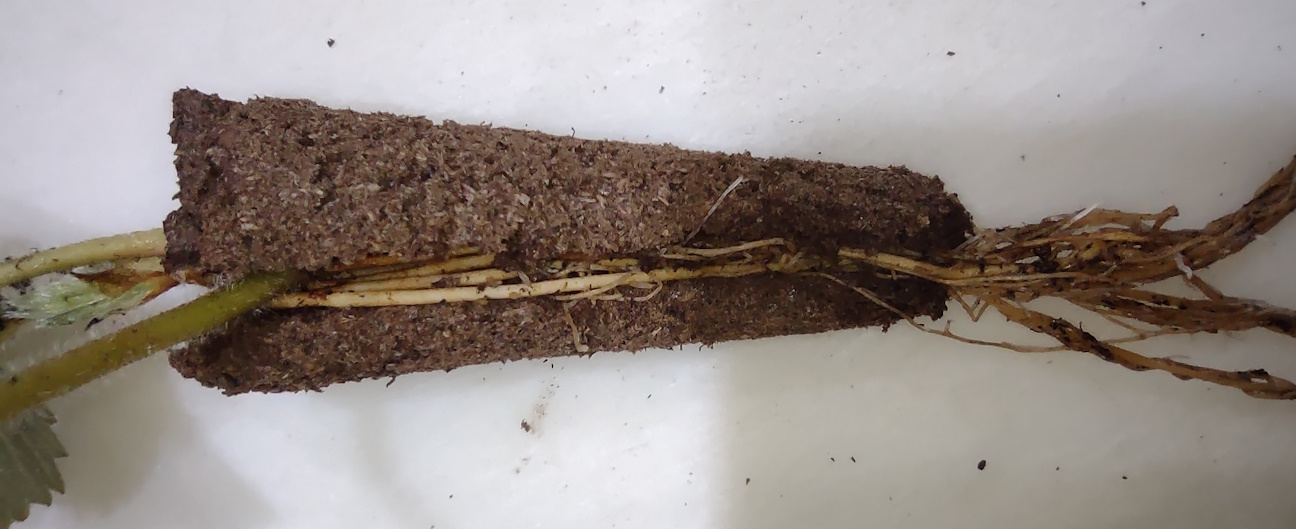
Follow these steps to transplant a seedling to a Hydroponic Growing System.
- Soak a grow sponge thoroughly.
- Carefully (and without hurting yourself!) slice the sponge length-wise so you can fold the sponge open like a split loaf of bread.
- Clean the roots of the seedling to remove all soil. Soil doesn’t belong in a Hydroponic Growing System.
- Lay the seedling in the grow sponge with the above-surface section at the top and roots exiting at the bottom point of the cone. Fold the grow sponge closed.
- Insert the grow sponge in a pod and insert the pod into the deck of the Hydroponic Growing System. You’re done!
Watch your transplanted seedling for a couple days to be sure it’s getting the water and nutrients necessary to survive. You can re-seat the plant if it seems to be struggling.
I used this transplant method on a couple small strawberry plants I pulled from my outdoor garden. During the winter, I grow a couple plants indoors to produce numerous baby plants from runners. Those baby strawberry plants go outside in spring.
- GROW WITH CONFIDENCE - We are so confident in the quality of our AeroGarden seeded pods, that we will send out a replacement seed pod if one fails to germinate after 3 weeks
- PLANT TO PLATE – Non-GMO seeds; No herbicides; No pesticides. Harvest herbs directly from the plant for use in your favorite recipes
- COMES WITH EVERYTHING - Also includes a 3 oz bottle of patented, specially formulated Liquid Nutrients and a Growing Guide with step by step instructions
- INCLUDES SALSA GARDEN SEED KIT - 5 pre-seeded Red Heirloom Cherry Tomato pods and 4 pre-seeded Jalapeno Pepper Grow Pod
- WORKS WITH ANY AEROGARDEN - For use in all AeroGarden models
Managing Your First Crop
Growing food in a Hydroponic Growing System for the first time is exciting. It’s surprising to see how well plants take to growing in water instead of soil.
Growing food indoors is fun and easy but not without some effort on your part. The plants need maintenance, of course.
Use the purest water you can find. Distilled or reverse osmosis (RO) water is good. Hard water may leave stains and softened water may contain salt. Tap water may have chlorine or other additives.
You’ll feed the plants regularly. Follow the instructions on the food supplied with the appliance. You can decide later if you’d like to alter the feeding schedule, but, starting off, stick with it.
Depending on the size of your Hydroponic Growing System, you may need to prune your plants to keep them from spreading everywhere or bumping up against the light assembly. Pruning your plants is a good thing; the nutrients in the water cannot support a massive plant. I’ve noticed the cherry tomatoes on my plant ripen quicker after I prune non-productive branches.
You should change the water in the reservoir regularly for long-term plants like tomatoes. A tomato plant can last for a year or even more in a countertop Hydroponic Growing System given proper care. Drain the water in the reservoir and immediately refill it with fresh water to clear out the crud that builds up in the tank. I do this about once a month for my tomato plants. I can tell when I’ve let the roots go too long in a dirty tank. You can use a siphoning device or a turkey baster to extract the water.
Wrapping Up Your First Crop
Eventually, the plants in your first crop will reach the end of their natural lives. Or, you’ll decide you want to try something else, and just terminate them. Either way, you need to prepare your Hydroponic Growing System for the next crop. Thoroughly clean your Hydroponic Growing System to remove any nasties that might negatively affect the next crop.
Wash out the water reservoir and clear all water lines of crud. The nutrients may leave residue and algae may be growing along edges of the tub or deck. Rinse off the pump.
The manufacturer of your device should have included cleaning instructions, but, if not, these ideas should get you through.
I run water mixed with some chlorine (bleach) through my Hydroponic Growing Systems to kill anything that might start growing again on the next crop. You can also run white vinegar by itself through the system.
I manually start the pump several times with the cleaning solution in the tub to ensure the solution cleans the water lines. Take your time with the cleaning process, since a few extra minutes here can prevent weeks or months of substandard plant growth. Once I’m satisfied the cleaning solution has worked its way through the system, I rinse the tub and deck and pump, fill the tub with fresh water, and run the pump manually enough times to clear residue of the cleaning solution. Then I repeat this process with fresh water. I don’t want any cleaning solution left in the tub or on the deck when I start my next crop.
Once I have a clean device and fresh water, I’m ready to start my next crop.
After Your First Indoor Garden, What Then?
Your Hydroponic Growing System should have come with the grow sponges, pods, stickers, transparent domes, and nutrients necessary to grow one plant in each available seat on the deck. Just no seeds. But the supplies included in the box covered only your first garden. When you’re ready to start your second crop, you’re out of supplies. What do you do?
You’ll need to purchase supplies before starting your next garden. Supplies you’ll purchase to continue receiving the benefits of your Hydroponic Growing System include pod kits and nutrients. You may purchase grow sponges without the full pod kits if you reuse your pod cones and domes and fashion your own pod cone covers (maybe aluminum foil).

Grow Sponges/Plugs
Grow sponges are generally a one-time use component of your garden. Budget for the cost of one grow sponge for every plant you start. I’ve reused dried sponges when the seed failed to germinate.
The popular Haligo 128 pcs Seed Pod Kit [affiliate link] fits AeroGarden and comparable Hydroponic Growing Systems. You get the equipment to plant 50 seeds, plus some “A and B” nutrients. If you need only the sponges, look at the Growell Grow Sponges 120 Pack [affiliate link] of AeroGarden-compatible grow plugs.
Plant Nutrients
Your garden requires nutrients. Several manufacturers offer nutrients for Hydroponic Growing Systems. You’ll see many plant nutrients are “A and B” combinations, some are “add to water” liquids, and others are all-in-one solutions. Keep enough nutrients on hand so you never run out. Reorder with plenty of time for the new supplies to arrive.
The General Hydroponics Flora series of plant fertilizers [affiliate link] fall into the “add to water” category. Based upon what you grow, mix the prescribed amount into a gallon of water and fill the tank of the garden appliance. I’ve tested this product on a crop of lettuce with good results. An alternative product in this category is the Humboldts Secret Set of A & B Liquid Hydroponics Fertilizer [affiliate link].
TPS Nutrients Liquid Plant Food [affiliate link] works like the AeroGarden plant food, with you simply adding an amount of solution directly to your device reservoir based upon the size of the Hydroponic Growing System. A review of the ingredients shows the TPS formula closely mirrors the AeroGarden formula.
Finally, iDOO Plant Food [affiliate link] is a standard “A and B” style fertilizer. iDOO is a well-established manufacturer of Hydroponic Growing Systems, so the nutrients they supply should be of high quality.
You can experiment with mixing your own nutrients, if you wish. There’s no harm in trying new things, as you can always just terminate the garden and start another if the plants fail to thrive.
Tips To Get You Going
If you’re accustomed to growing plants outdoors or on your windowsill, here are a few observations on the differences between traditional and modern gardening.
Your indoor garden runs year-round and can be placed anywhere in your house with access to electricity. You’re no longer limited to summer gardens or windows.
Starting over on a garden is no big deal. Plants often grow quicker in a Hydroponic Growing System than in soil. You may be reluctant to restart a plant in soil in a pot but you should be quick to restart an under-performing plant in your Hydroponic Growing System.
If you are the adventurous type, try starting a variety of plants from seed. “Will it grow?” can be your mantra. Your indoor garden can provide you with the exotic vegetables not found in the typical grocery store.
You can try growing more than one lettuce plant in a single pod. Your six-pod garden appliance might give you twelve lettuce plants. Test your limits here.
Fill the water reservoir before the device reminds you. Your plant needs that water and the low-water reminder is a fail-safe to keep your plant from dying from neglect. A tomato plant drinks water quickly, so top off the water level every one to three days. A low water level means the roots of your plants are in air, not the nutrient-rich water.
Your plants love the light so keep the light platform as low to the top of the plants as possible. You’ll find this difficult to do if you plant tall and short plants in the same Hydroponic Growing System. (That’s another reason why you need several Hydroponic Growing Systems!)
You can find more tips on growing food indoors in the companion article, Tips For Growing A Bountiful Indoor Garden.
Key Takeaways
Your new indoor garden will bring you years of food and fun with far less effort than a raised bed in the back yard. You’ll love it!
It’s hard to have just one Hydroponic Growing System once you experience how easy gardening can be. Get a couple more and you can diversify your garden. Tall plants in one device, lettuce in another, and herbs in a third. Why bother growing food outdoors at all?
Welcome to the indoor gardening community.
You Have A New Hydroponic Growing System. Now What?
You have a new indoor garden and high hopes. What do you do next?
Keep ReadingSurviving in a Post-AeroGarden World
AeroGarden announced its closing effective the first of January, 2025. Farewell, good friend.
Keep ReadingThe Most Reviewed Indoor Gardening Equipment
You don’t get thousands or tens of thousands of reviews by being a horrible product. What works? Find out here.
Keep Reading32 Factors to Consider When Setting Up Your Indoor Garden
Avoid making simple mistakes when you set up your indoor garden.
Keep ReadingYou Can Grow Tomatoes Indoors
You can grow delicious tomatoes indoors all year long, and it’s actually quite easy. Get started now!
Keep ReadingIs Indoor Gardening Expensive?
Is gardening indoors expensive? Relatively, no.
Keep ReadingA Raised Bed Garden Indoors? Bring It On!
Learn how to grow your food indoors using an indoor garden bed.
Keep ReadingTips For Growing A Bountiful Indoor Garden
Make your life easier and grow more food indoors with these tips, tricks, and suggestions.
Keep ReadingHow to Choose Your Hydroponic Growing System
Ready to buy a hydroponic growing system, but not sure what features matter? Start here!
Keep ReadingHow to Plan Your Indoor Garden
Get more from your indoor garden by gardening with a purpose.
Keep ReadingIndoor Gardens Aren’t Outdoor Gardens Indoors
When you grow your garden indoors, you leave the old traditions and limitations outdoors.
Keep ReadingHow to Get a Salad Every Day from Your Indoor Garden
You can grow an indoor salad all year long. Learn how!
Keep ReadingWhat Can I Grow with My Indoor Garden?
Spoiler alert: Almost anything! This is a LONG list. And it’s really easy.
Keep ReadingLimited Floor Space? Go Vertical With Your Garden!
Learn about vertical indoor gardens and discover your options.
Keep ReadingHow a Self-Watering Hydroponic System Works
Get the best self-watering hydroponic system by learning how they work.
Keep ReadingWhy Your Outdoor Garden Should Be Indoors
Bring your garden indoors for year-round produce without the back-aches.
Keep Reading
